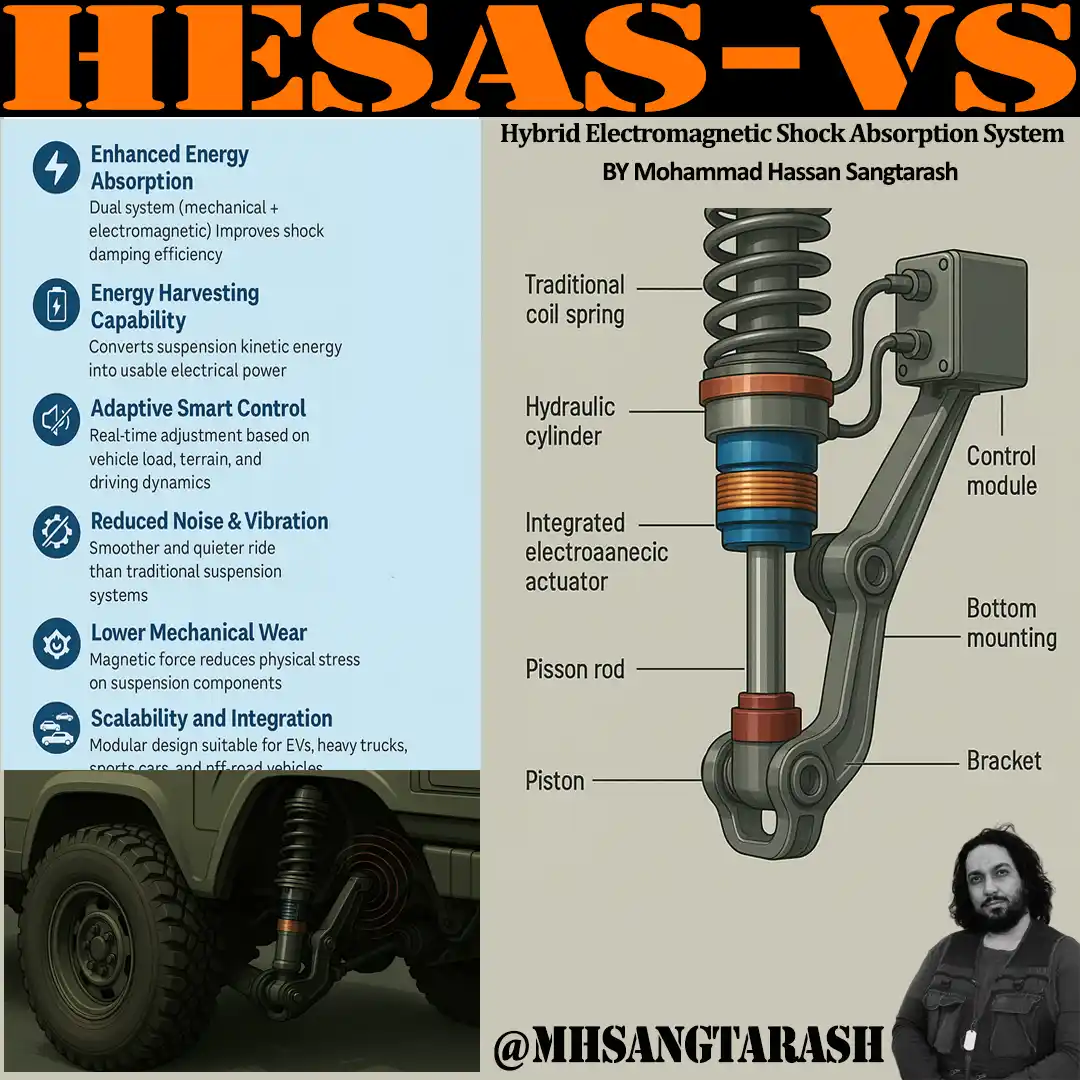محمد حسن سنگتراش
12 یادداشت منتشر شدهHybrid Electromagnetic Shock Absorption System for Aircraft Landing Gears
By Mohammad Hassan Sangtarash – Independent Researcher in Defense-Strategic Studies
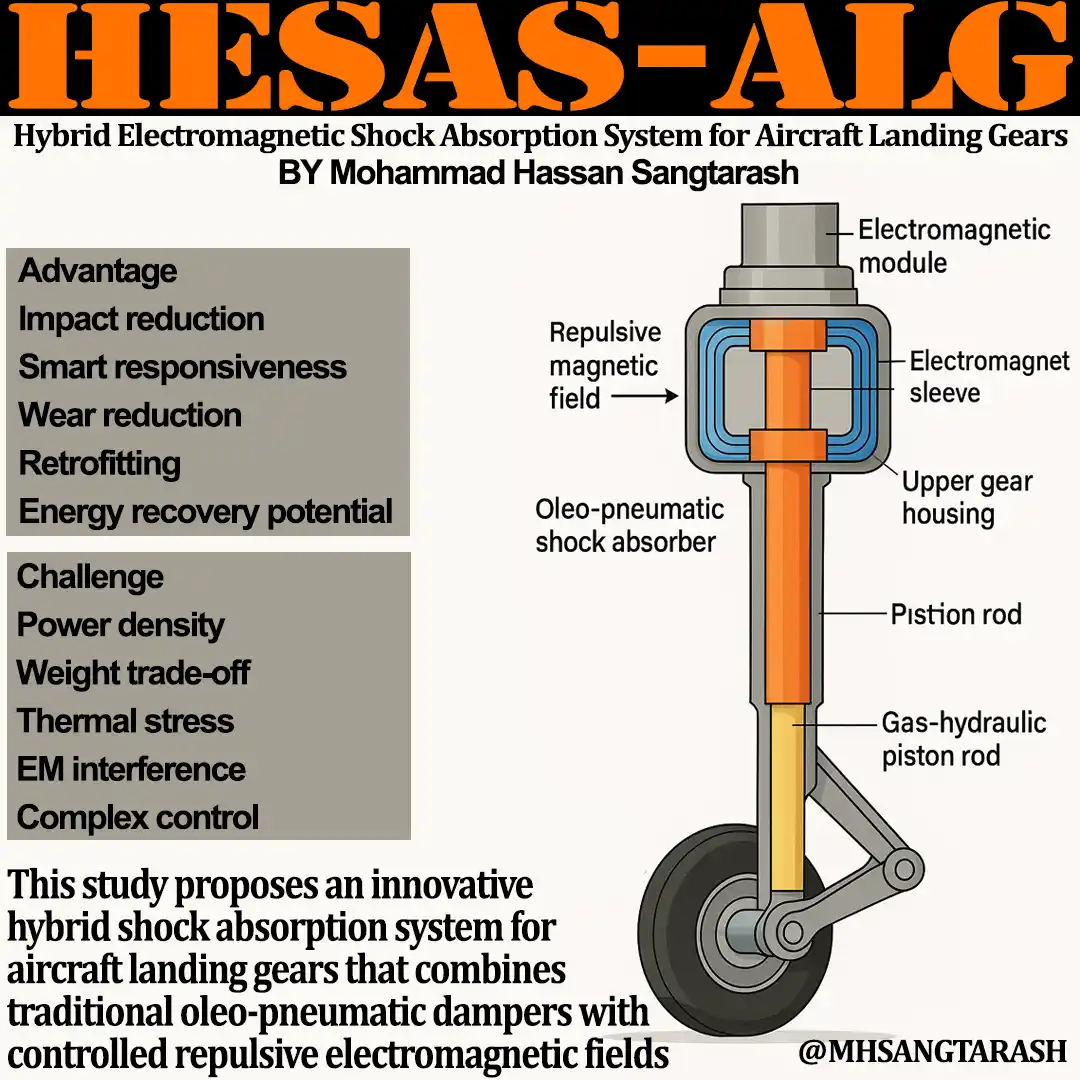
Abstract
This study proposes an innovative hybrid shock absorption system for aircraft landing gears that combines traditional oleo-pneumatic dampers with controlled repulsive electromagnetic fields. The goal is to reduce landing impact, increase system adaptability, and enhance the longevity of mechanical components. While magnetic suspension is already implemented in ground vehicles, its application in aviation remains unexplored in practice. This paper assesses the feasibility of using transient electromagnetic force as a complementary absorber during critical landing phases. It examines the physics, benefits, limitations, and control strategies associated with such a system and explores future scenarios for integration into UAVs, fighter jets, and space-capable airframes.
1. Introduction
Aircraft landing gear systems are among the most stress-prone subsystems in aviation engineering. During touchdown, they must absorb kinetic energy equivalent to several times the aircraft’s weight. The dominant technology used today is the oleo-pneumatic strut, which combines compressed gas and hydraulic fluid to dissipate landing impact. Despite being robust and reliable, these systems face limitations in:
- Adjustability under different landing scenarios,
- Wear due to repeated mechanical stress,
- Response latency in high-speed landings.
In contrast, magnetically-controlled systems have revolutionized ground vehicle suspensions (e.g., GM’s Magnetic Ride Control or the Bose electromagnetic suspension). Inspired by these advances, this paper presents a hybrid concept for landing gear that utilizes electromagnetic repulsion in coordination with existing systems, aiming to mitigate impact during the critical milliseconds of ground contact.
2. Physics and Engineering of Electromagnetic Repulsion
2.1 Principle of Magnetic Levitation and Repulsion
Electromagnetic systems rely on Lorentz force and magnetic field interactions. When two like poles (e.g., north-north) face each other, a repulsive force is created, whose magnitude is governed by

In a controlled circuit, electromagnets can be energized on demand to produce a temporary but strong repelling field. This is widely used in:
- Maglev trains (continuous levitation),
- Magnetic brakes (eddy current),
- Laboratory-grade frictionless platforms.
2.2 System Architecture
A conceptual hybrid landing gear would include:
- Primary absorber: Traditional oleo strut (gas-hydraulic).
- Electromagnetic module: Coil system in the upper gear housing and ferromagnetic sleeve on the piston rod.
- Sensor suite: Radar altimeter + accelerometer to detect altitude and descent velocity.
- Power and control: High-discharge capacitors and embedded microcontroller for transient actuation (~10–50 milliseconds).
2.3 Energy Requirements
Assuming a landing weight of 10,000 kg with descent velocity of 2.5 m/s, the system must momentarily counter a kinetic energy of ~31.25 kJ. Electromagnetic systems can provide high impulse force, but only for short durations. Hence, it acts as a pre-shock absorber, allowing the hydraulic system to complete the cycle.
3. Applications and Use Cases
3.1 Fighter Jets
- High-speed landings and short-runway operations demand rapid impact absorption.
- EM buffers can be programmed to activate only in high G-approach scenarios.
- Useful in carrier-based aircraft where stress is extreme.
3.2 UAVs and Drones
- UAVs often land with fragile components.
- Lightweight electromagnetic systems with active control can reduce bounce and improve ground handling.
- Ideal for reconnaissance drones, autonomous landing systems, and urban air mobility vehicles.
3.3 VTOL and Spacecraft
- In future VTOL and Moon/Mars landers, where gases may behave differently, non-hydraulic buffers like EM shock absorbers become attractive.
- Allows fine control over descent phase without heavy damping systems.
4. Benefits of the Electromagnetic Hybrid System
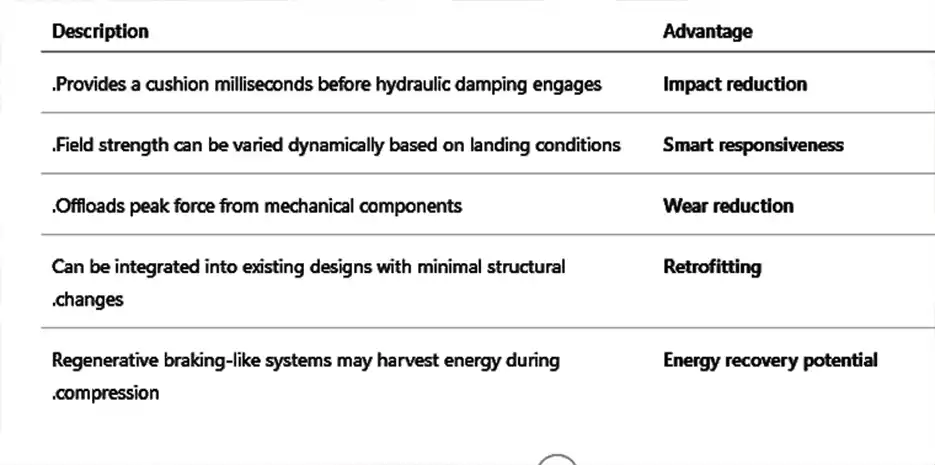
5. Challenges and Limitations
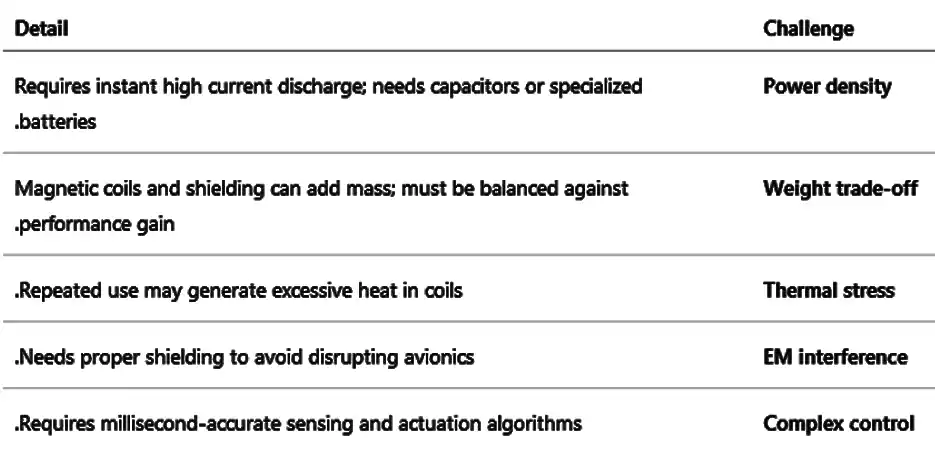
6. Comparison with Other Systems
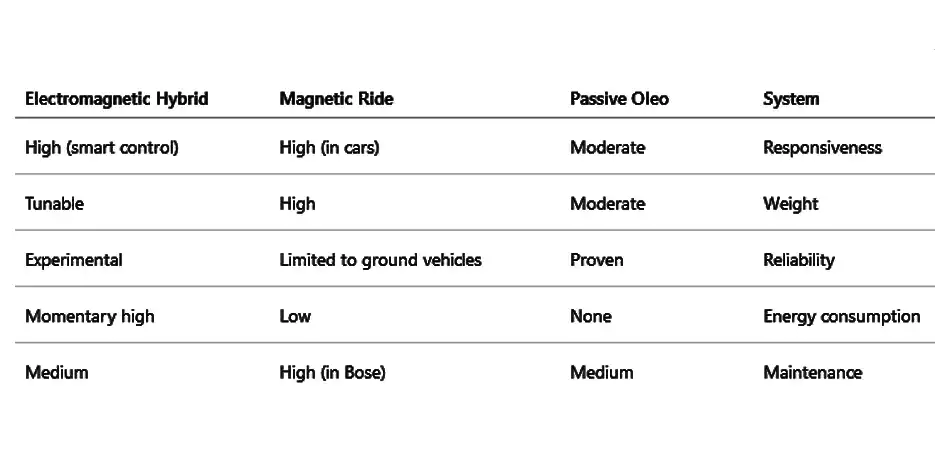
7. Future Research Directions
- Prototype development on scale-model UAVs to test EM repulsion under real impact.
- Optimization of coil materials (e.g., superconducting or nanomaterials) for weight savings.
- AI-based controllers for predictive actuation based on descent profile and aircraft mass.
- Integration with regenerative systems for dual-use (impact buffering + energy recovery).
- Validation in lunar/Martian gravity simulators.
8. Conclusion
The incorporation of electromagnetic repulsion systems into aircraft landing gear represents a promising frontier in adaptive aeronautical engineering. By supplementing conventional oleo systems, a hybrid configuration can provide better impact mitigation, adjust dynamically to landing scenarios, and extend gear life. Though currently at conceptual or research stage, this technology aligns with the aerospace industry's trajectory toward smart, energy-efficient, and responsive systems. With advancing materials and compact energy storage technologies, its realization—particularly in drones, fighter jets, and VTOL systems—is both feasible and strategically valuable.
Footnote:
By leveraging the spillover knowledge from aircraft landing gear systems, we can develop a new type of shock absorber for vehicles that not only reduces mechanical wear, vibrations, and noise, but also generates electricity from kinetic energy — a feature of significant importance for electric vehicles.
